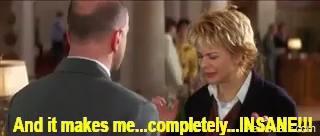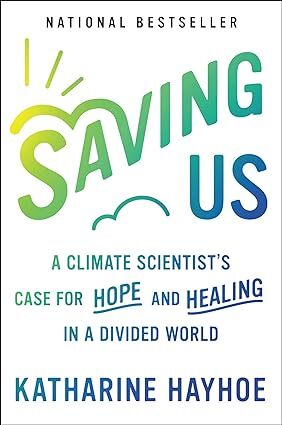Book review: Saving Us

Environmental stewardship and climate have long been high, high priorities for me. That is because of my Christian faith and because nature is where I find God and myself and all peace that can be found. But it’s also because I have experienced the damage human beings can do to each other through thoughtless misuse of the natural world.
I’ve written about this before (and at length), but in a nutshell, this is our story. We thought our infertility was a function of polycystic ovaries—and I remain on metformin to this day to treat that—but what ended up allowing us to have children was… are you ready for this? A water filter.
After nearly 3 years of work on my health, my husband encountered, through his job promoting research, studies that showed correlation, and later causation, between alachlor, diazanon, and atrazine in the water supply where we live and suppression of MALE fertility.
It’s really quite jarring to experience in one’s own body and soul how concrete and substantial the impact of human behaviors on nature can be.
For this reason, pushback on environmental policy is one of the things in today’s toxic political environment that makes me COMPLETELY INSANE.

I want so desperately for us as human beings to fix this.

So of course, when I heard about Saving Us: A Climate Scientist’s Case for Hope And Healing, I was going to read it.
And the first thing I learned was that everything I want to do to communicate with people is useless, because those who resist most strongly are not reachable, for a host of reasons psychological, tribal, and even evolutionary. This was slightly demoralizing, I have to admit.
Katharine Hayhoe instead wants us to recognize that it’s not climate change we necessarily need to talk about. If you live in a place where there isn’t enough water, then you work with people on how to manage water and come up with ways to conserve—which is what we need to do in the first place. If you are talking to a person who values saving money, you gush about the savings you get from using solar–which accomplishes the goal of reducing fossil fuels. It doesn’t matter if they agree with you, she seems to say, if you get the job done.
Browbeating, in other words, is unproductive. Looking for values you hold in common and then sharing ways you have discovered to honor those values is the way to go.
The first half of the book really is about breaking down all the problems. It was news to me that biofuel like ethanol actually produces more carbon in the processing than it saves in the burning. Uh-oh.
She also—dishearteningly—points out something I didn’t want to hear from someone who’s actually studied the matter. Namely, that no matter what we all do as individuals, it won’t tip the scales, because it’s the structures that have to change. The biggest sources of carbon are things like airplanes.
But then she starts showing solutions that are already under development. A company called Renewable Energy Group converts agricultural waste and cooking oil from restaurants into diesel fuel. There are big forward strides in electric powered boats and airplanes. Iowa State University has developed “biochar,” which is basically pure carbon that, when applied to soil, acts as a near-miraculous fertilizer. Putting carbon back in the soil, where it came from and where it’s supposed to be, is not just possible, it provides huge benefits to farmers.
And so on and so on. By the time she finished laying out all the possibilities and how they will actually save money once implemented, I thought, “Holy cow, there IS hope.”
Hayhoe also confirms, anecdotally at least, something I have suspected for a long time—that even if your personal actions can’t fix the world, doing ONE thing to be more sustainable gives you a sense of empowerment and leads you to seek out others—and often changes people who are lukewarm about environmental stewardship into enthusiasts.
Katharine Hayhoe is very effective at what she does. Her stories of connecting with people and making a difference on this topic inspire me. I am less confident in my own ability.
Still, here I am, combining book review with personal witness of my own, in hopes of being one of the people putting a hand on the rock at the top of the hill, as she calls it, and giving it my own little push to start the ball rolling.
Here is a sampling of things we do in our family to be good stewards of the environment:
Turn the car off. Collectively, we use 3 billion gallons of gas a year doing absolutely nothing. https://www.youtube.com/watch?v=gHRwwsdalqASolar panels. In 2023 our family produced 104% of our electric usage.Battery-powered lawn mower.Reuse dishwater to water outdoor flowers (and veggies).Cloth shopping bags for every grocery and Target run.Combining trips and walking. Target is across the street from my kid’s school. I mean, it’s a big street and Target is the other end of the parking lot and the mall. So across the street means about 3/4 of a mile. But I will go early for pickup, park, and then walk to Target and back. Once, when I had too much stuff to carry, I did it the opposite direction: parked at Target, did the shopping, walked over to collect the kids, and we all walked back. People think I’m nuts, but when I was visiting Chicago it was very clear to me that the only reason we think we have to drive everywhere is because there’s parking everywhere. When you go to Chicago, you park in one place and you walk. We’re all capable of this. My husband routinely walks downtown to the bank instead of driving on his lunch break.Homemade laundry detergent, so we don’t have to keep buying more big plastic bottles.


